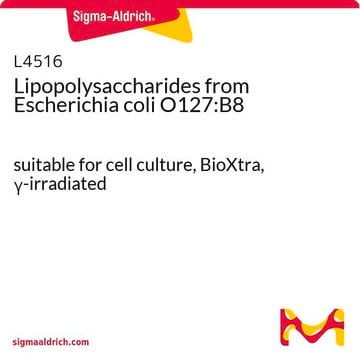SML0508
Pentostatin
≥95% (HPLC)
Sinônimo(s):
(8R)-3-(2-Deoxy-β-D-erythro-pentofuranosyl)-3,4,7,8-tetrahydroimidazo[4,5-d][1,3]diazepin-8-ol, 2′-dCF, DCF, Deoxycoformycin
About This Item
Produtos recomendados
Ensaio
≥95% (HPLC)
forma
powder
atividade óptica
[α]/D +70 to +80°, c = 1 in H2O
condição de armazenamento
desiccated
cor
white to beige
solubilidade
H2O: 10 mg/mL, clear
Condições de expedição
wet ice
temperatura de armazenamento
−20°C
cadeia de caracteres SMILES
OC[C@H]1O[C@H](C[C@@H]1O)n2cnc3[C@H](O)CN=CNc23
InChI
1S/C11H16N4O4/c16-3-8-6(17)1-9(19-8)15-5-14-10-7(18)2-12-4-13-11(10)15/h4-9,16-18H,1-3H2,(H,12,13)/t6-,7+,8+,9+/m0/s1
chave InChI
FPVKHBSQESCIEP-JQCXWYLXSA-N
Informações sobre genes
human ... ADA(100)
Aplicação
Ações bioquímicas/fisiológicas
Características e benefícios
Outras notas
Palavra indicadora
Danger
Frases de perigo
Declarações de precaução
Classificações de perigo
Acute Tox. 3 Oral
Código de classe de armazenamento
6.1C - Combustible acute toxic Cat.3 / toxic compounds or compounds which causing chronic effects
Classe de risco de água (WGK)
WGK 3
Ponto de fulgor (°F)
Not applicable
Ponto de fulgor (°C)
Not applicable
Certificados de análise (COA)
Busque Certificados de análise (COA) digitando o Número do Lote do produto. Os números de lote e remessa podem ser encontrados no rótulo de um produto após a palavra “Lot” ou “Batch”.
Já possui este produto?
Encontre a documentação dos produtos que você adquiriu recentemente na biblioteca de documentos.
Os clientes também visualizaram
Artigos
We offers many products related to adenosine receptors for your research needs.
Nossa equipe de cientistas tem experiência em todas as áreas de pesquisa, incluindo Life Sciences, ciência de materiais, síntese química, cromatografia, química analítica e muitas outras.
Entre em contato com a assistência técnica













